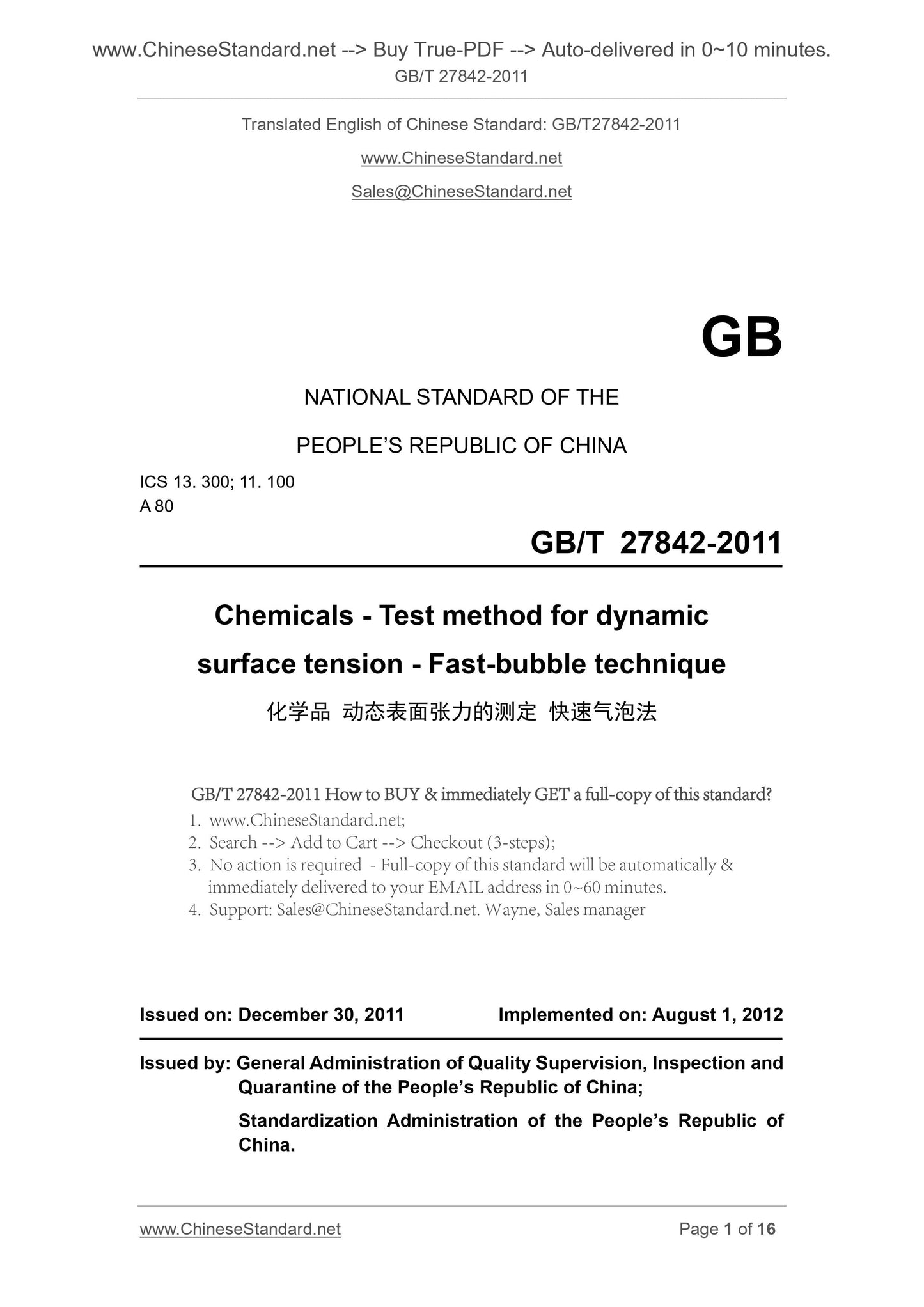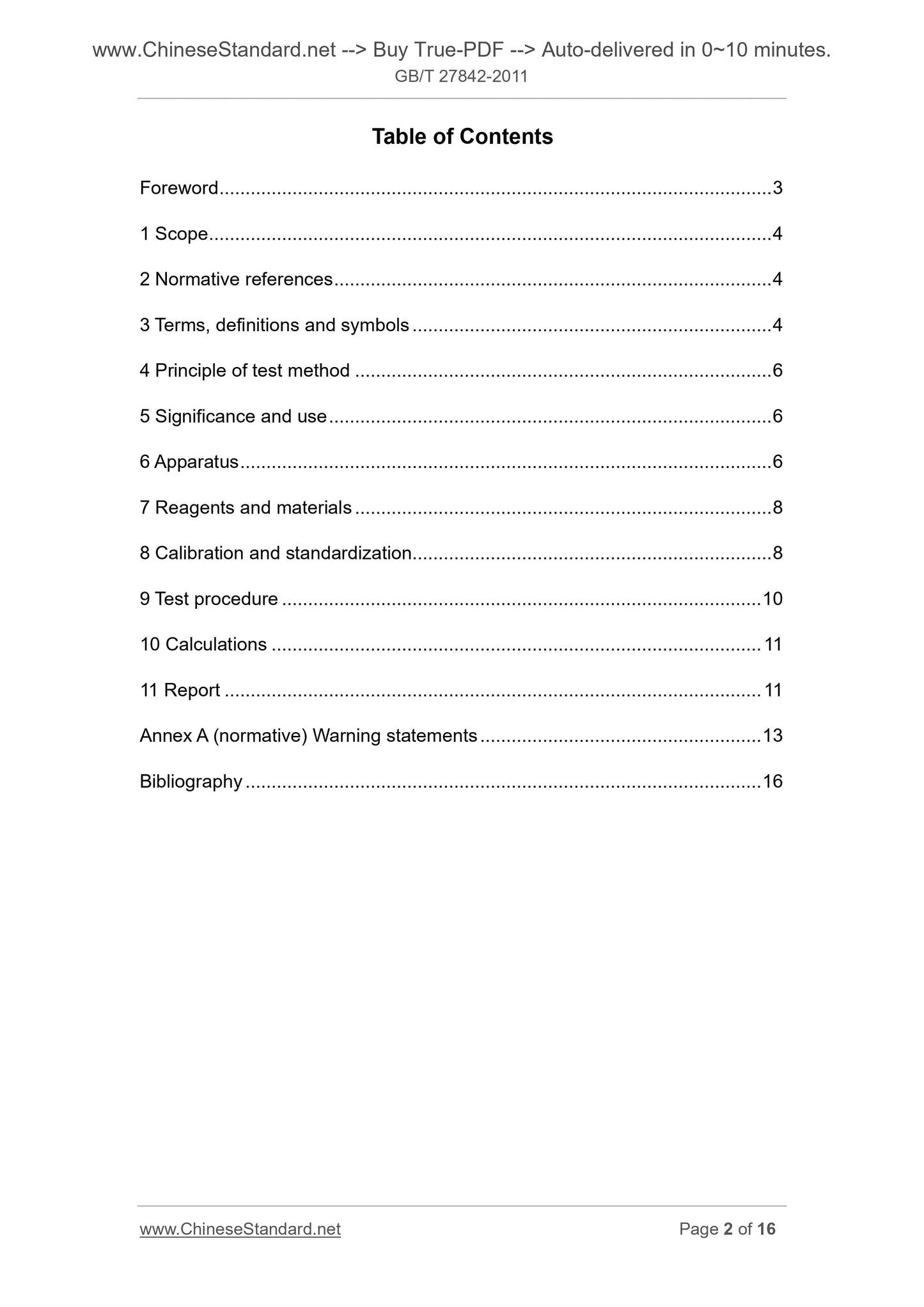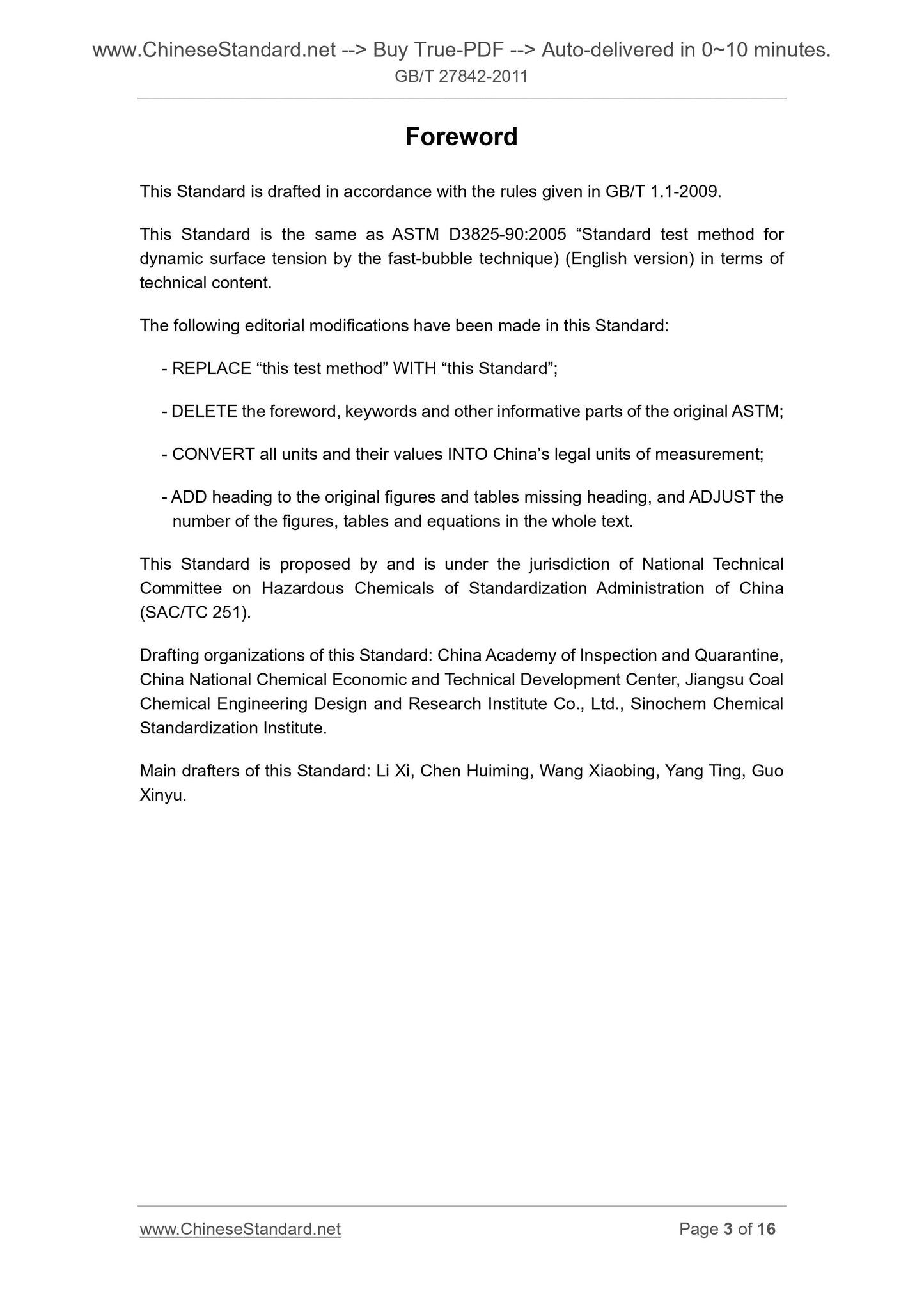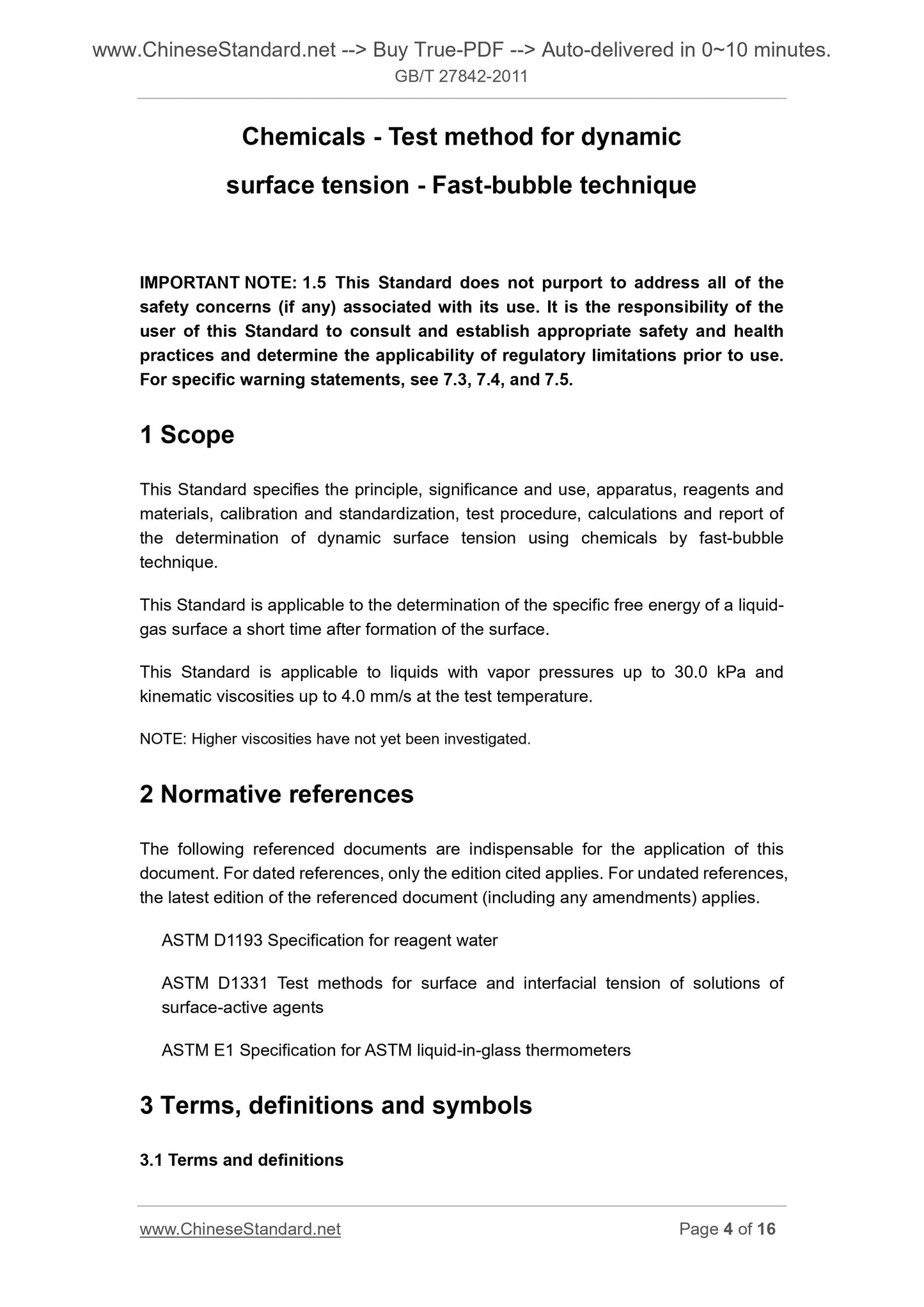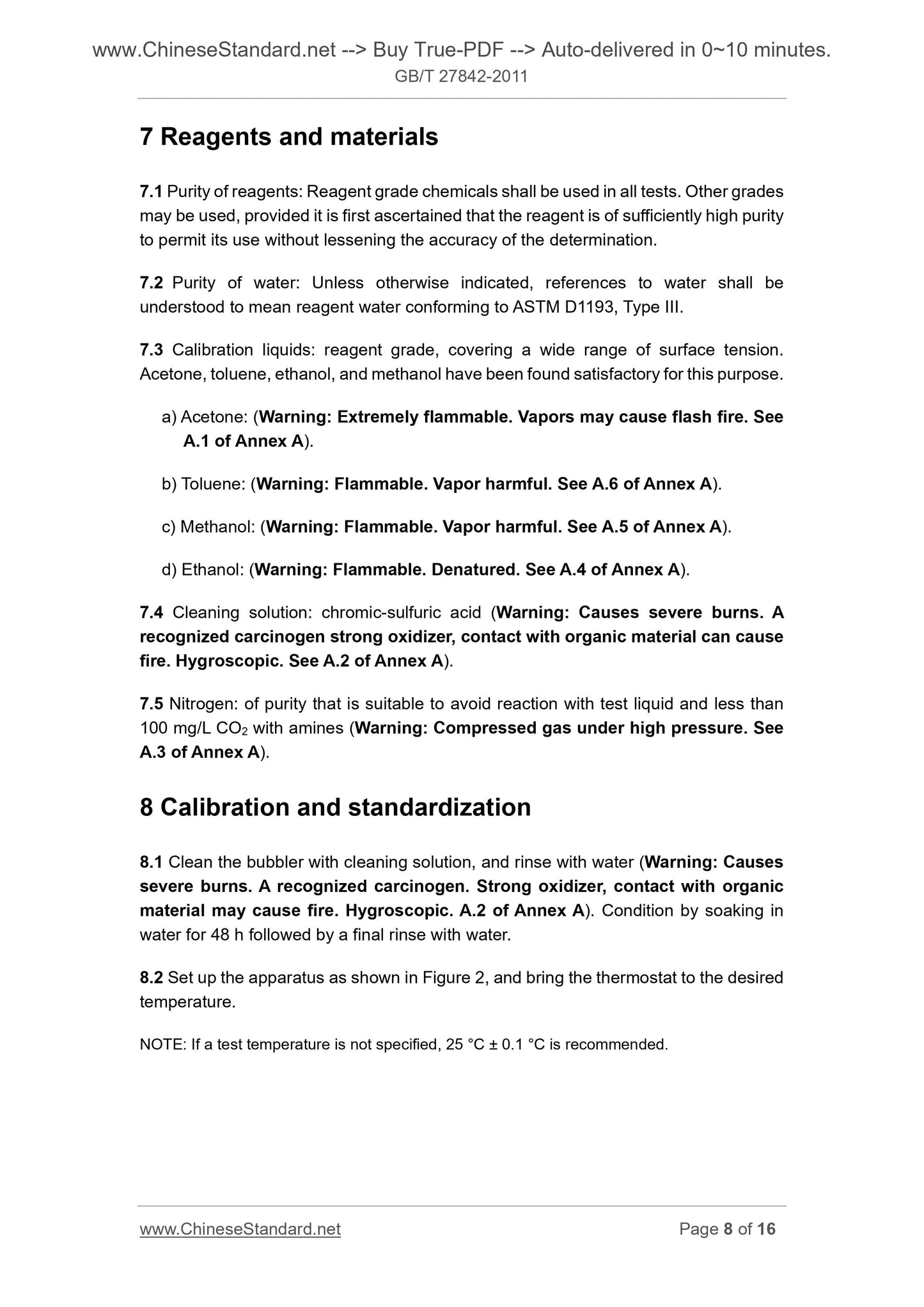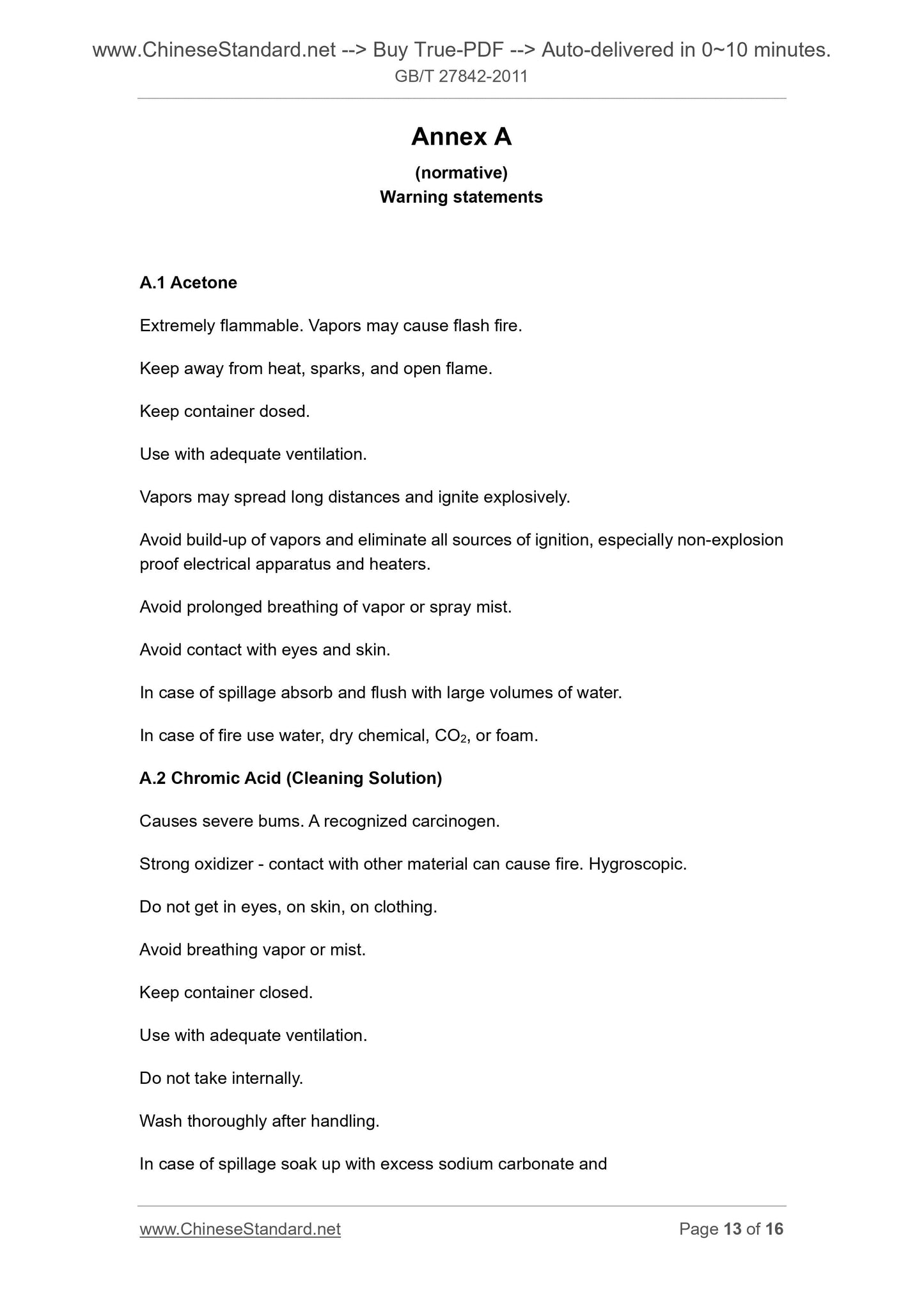1
/
of
6
www.ChineseStandard.us -- Field Test Asia Pte. Ltd.
GB/T 27842-2011 English PDF (GB/T27842-2011)
GB/T 27842-2011 English PDF (GB/T27842-2011)
Regular price
$150.00
Regular price
Sale price
$150.00
Unit price
/
per
Shipping calculated at checkout.
Couldn't load pickup availability
GB/T 27842-2011: Chemicals - Test method for dynamic surface tension - Fast-bubble technique
Delivery: 9 seconds. Download (and Email) true-PDF + Invoice.Get Quotation: Click GB/T 27842-2011 (Self-service in 1-minute)
Newer / historical versions: GB/T 27842-2011
Preview True-PDF
Scope
This Standard specifies the principle, significance and use, apparatus, reagents andmaterials, calibration and standardization, test procedure, calculations and report of
the determination of dynamic surface tension using chemicals by fast-bubble
technique.
This Standard is applicable to the determination of the specific free energy of a liquid-
gas surface a short time after formation of the surface.
This Standard is applicable to liquids with vapor pressures up to 30.0 kPa and
kinematic viscosities up to 4.0 mm/s at the test temperature.
NOTE. Higher viscosities have not yet been investigated.
Basic Data
| Standard ID | GB/T 27842-2011 (GB/T27842-2011) |
| Description (Translated English) | Chemicals - Test method for dynamic surface tension - Fast-bubble technique |
| Sector / Industry | National Standard (Recommended) |
| Classification of Chinese Standard | A80 |
| Classification of International Standard | 13.300; 11.100 |
| Word Count Estimation | 13,149 |
| Date of Issue | 2011-12-30 |
| Date of Implementation | 2012-08-01 |
| Quoted Standard | ASTM D1193; ASTM D1331; ASTM E1 |
| Regulation (derived from) | Announcement of Newly Approved National Standards No. 23 of 2011 |
| Issuing agency(ies) | General Administration of Quality Supervision, Inspection and Quarantine of the People's Republic of China, Standardization Administration of the People's Republic of China |
| Summary | This standard specifies the method for the determination of chemicals bubble dynamic surface tension principle, meaning and purpose, instruments and equipment, reagents and materials, calibration and standardization, experimental procedures, calculations and reports. This standard applies to the surface of the instantaneous liquid gas Determination of interfacial free energy. This standard applies to the test temperature, the vapor pressure of less than or equal 30. 0kPa and kinematic viscosity of less than equal to 4. 0 mm/s for liquids. |
Share
